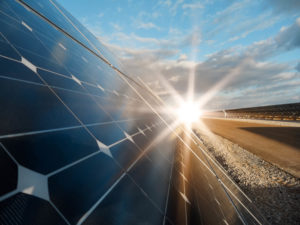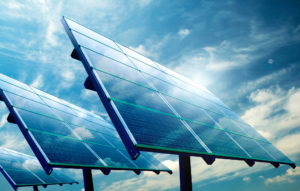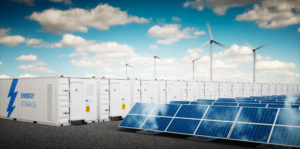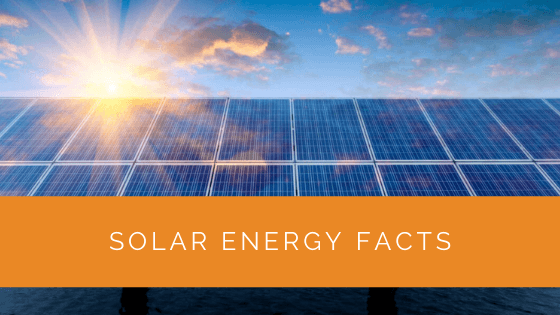Imagine living in a world where the limitations of traditional energy sources like fossil fuels do not tie us down. A world where harnessing the power of the sun is not just a dream but a practical reality. This is no longer a distant fantasy; it’s a tangible possibility within our reach today.
The transition to renewable energy is not just a trend but a necessity for the future of our planet. The advancements in technology and the more affordable costs of solar panels are making solar energy an increasingly attractive option for many. Whether you’re already a supporter of solar energy or still weighing its benefits, there are numerous compelling reasons to consider this clean and sustainable energy source. Let’s explore the intriguing world of solar power and understand why it might be the right time to embrace this change.
Contents
- 1 What Is Solar Power?
- 2 How Do We Harness Solar Energy?
- 3 Solar Energy Facts That You Should Know
- 3.1 Solar Is An Abundant Energy Source
- 3.2 Space Industry Adopted Solar In The 1950s
- 3.3 China Leads The Solar Energy Industry
- 3.4 California Tops US States In Using Solar Energy
- 3.5 Solar Panels Do Not Always Need Direct Sunlight
- 3.6 Installing Solar Panels Gives You Long-Term Benefits
- 3.7 Solar Energy Can Power Planes
- 3.8 The US Has Four Of The Top Five Largest Solar Stations
- 3.9 Solar Energy Is Highly Cost Competitive
- 3.10 PV Systems Avoid 100 Tons Of CO2 Emissions
- 3.11 Solar Leads In Useful Life
- 3.12 Solar Demand Is Increasing Continually
- 4 The Solar Energy Industries Association
- 5 Frequently Asked Questions about Solar Energy and Solar Panels
- 6 Expert Insights From Our Solar Panel Installers About Solar Energy
- 7 Experience Solar Excellence with Us!
- 8 Summing Up
What Is Solar Power?
Solar energy is simply the power that we obtain from the sun’s rays. Surely, you have known this simple definition since your school days.
However, converting solar radiation into a usable source of energy took significant years. At this time, research in photovoltaic cells, solar panels, and manufacturing methods proves monumental to use solar power effectively.
How Do We Harness Solar Energy?
With the help of technology, we capture and use solar radiation that reaches the earth’s surface. Prominently, two forms of solar technologies are crucial in harnessing this energy.
- Photovoltaics (PV)
- Concentrating solar thermal power
Thus, incoming solar radiation falls on components like a solar panel. These panels are made from PV cells that absorb this energy and convert it into electricity.
Right now, you can explore various solar energy systems that power different solar devices. Overall, the simple basics have transformed the renewable energy market.
Solar Energy Facts That You Should Know
Enough with the basics. Here are some brief facts about solar power that every energy consumer must know. After all, these facts can equip you with invaluable knowledge to shift towards a very reliable energy source.

Solar Is An Abundant Energy Source
This fact is a cliche, right from most of our textbooks. Interestingly, the earth continuously receives approximately 173,000 terawatts of solar energy.
This enormous amount of energy is 10,000 times greater than the world’s total energy usage. Thus, when you read about the abundance of solar energy, always remember these gigantic numbers.
The challenge for humankind is to capture this renewable source of energy with minimum losses. With advancements in technology, we are taking great strides to improve the conversion efficiency of solar power systems.
Space Industry Adopted Solar In The 1950s
You can trace the adoption of solar energy way back to the 50s. The space industry began using solar cells to power Vanguard 1. This project was a small satellite launched in March 1958.
Thus, scientists and engineers assessed the great capability of solar energy during this venture. Importantly, this artificial earth satellite powered by solar cells was first amongst its types.
This satellite is still orbiting around the world in space. Interestingly, the contact with Vanguard 1 ended in 1964. Overall, this fact depicts the flexibility and reach of solar power to provide customized energy.
China Leads The Solar Energy Industry
Countries across the globe are striving hard to provide subsidies and incentives for the domestication of solar technology. However, China has been at the forefront in using solar panels and generating enough solar energy.
With a cumulative solar power capacity of over 250 GW, China can produce enough energy to power millions of homes. This fact has motivated the entire world to invest in electricity generation using solar energy.
California Tops US States In Using Solar Energy
The US average annual growth of solar power in the last decade is around 42%. Apart from creating jobs, solar power offers other benefits like decreased electricity bills, a decline in carbon dioxide levels, etc.
Importantly, people in California are witnesses to such benefits. With over 32,000 MW capacity, California dominates the US solar market.
Solar systems are virtually maintenance-free. Thus, you can observe many rooftop systems in California. In addition, this US state has an excellent mixture of commercial, CSP, and large solar power plants.
Solar Panels Do Not Always Need Direct Sunlight
Do you wonder why solar energy is reaching areas with scanty sunlight? It’s because modern solar panels can capture the sun’s spectrum and generate electricity.
What’s more? Research to power solar panels using artificial light is underway! So, if you are a domestic customer and wonder about the lack of sunlight, fret not. Solar panels can operate on cloudy days too.
Furthermore, you can always install a solar inverter to store excess power in the home solar system. All in all, the solar industry has come a long way, thanks to technology.
Installing Solar Panels Gives You Long-Term Benefits
One of the most common questions amongst potential solar consumers is – ‘Do solar panels pay for themselves?’
The simple answer to this question is, ‘yes.’ Solar panels can save the burden of increased electricity tariffs. Also, installing a solar panel system makes you eligible for tax deductions.
All these factors eventually lead to a decline in energy costs. Furthermore, you can install several solar-powered devices at home. Thus, always remember this fact when exploring solar panel installations.
Solar Energy Can Power Planes
You might have heard about cars running due to solar energy. But, did you know about a plane that flies by virtue of solar power?
In 2010, solar impulse 1 made a flight lasting for 26 hours. Importantly, this plane reached an altitude of approximately 8,700 meters. Later, the solar impulse 2 made its first flight in 2014, reaching a max speed of 87 mph.
At this time, the Solar Impulse Foundation works on clean aviation and promotes solar energy. Hence, a solar-powered plane is no longer a distant possibility.

The US Has Four Of The Top Five Largest Solar Stations
At this time, the Noor Power Station in Morocco is the world’s largest solar power plant. With a gross energy capacity of 510 MW, the Noor Power Station operates in three phases.
The US state of California has the three largest solar power plants.
- Ivanpah Solar Power Facility
- Mojave Solar Project (MSP)
- Genesis Solar Energy Project
Arizona is home to the Solana Generating Station with a capacity of 280 MW, similar to Mojave and Genesis. Interestingly, the MSP is located in the Mojave desert.
Hence, the US is capitalizing on creating infrastructure for new electric capacity. Such solar plants can produce power to meet the rising energy demands without polluting the planet.
Solar Energy Is Highly Cost Competitive
Renewable energy from the sun is no longer a luxurious investment. According to Lazard’s Levelized Cost Of Energy Analysis, solar energy is cheaper than fossil fuels, natural gas, and nuclear sources.
Thus, it won’t be a surprise to witness the steady exclusion of fossil fuels from energy generation. Solar energy costs around $0.06 per kilowatt hour. In addition, homeowners in the US have even profited by a breakeven point of merely three years.
Overall, it makes perfect sense to install photovoltaic panels on your roof in states with high utility prices. After all, a solar home setup proves highly lucrative.
PV Systems Avoid 100 Tons Of CO2 Emissions
The US Department Of Energy states that solar power reduces the following emissions drastically.
- 8 pounds of sulfur dioxide
- 5 pounds of nitrogen oxide
- Over 1,400 pounds of carbon dioxide
These calculations pertain to generating 1000 kilowatt-hour of solar electricity. Thus, in nearly 30 years, domestic solar installations can avoid around 100 tons of CO2 production per household.
We can all replace our dependency on fossil fuels and aim for a cleaner energy future. So, it’s time to play our part and ditch non-renewable fossil fuels gradually.
Solar Leads In Useful Life
According to the National Renewable Energy Laboratory, solar technologies have a useful life of over 25 years. In addition, most solar panels last for an average of 30 years, making the investment a fruitful one.
Compared to fossil fuel power plants, solar thermal stations offer more flexibility. In fact, experts can replace an entire silicon solar cell with hi-tech modules. Thus, a solar power plant creates an infrastructure that is non-polluting and sustainable.
With a mere 0.5% degradation rate per year, solar panels are profitable in terms of useful life.
Solar Demand Is Increasing Continually
The solar market is at an all-time high. In the US, solar systems installation has increased over 20 times in the last decade.
Solar energy has seen a significant rise in popularity, as evidenced by the Solar Energy Industries Association’s report highlighting the extensive number of solar installations across the United States.
Thus, the solar market in the US is booming, taking into consideration promising figures.
The Solar Energy Industries Association
Now that you are aware of several intriguing solar facts, it’s time to familiarize yourself with vital organizations in the solar industry.
The Solar Energy Industries Association (SEIA) has been a body functioning since 1974. This solar foundation is a non-profit organization. The SEIA works with 1000 companies and aims to achieve a staggering 30% electrical generation through solar energy.
Located in Washington DC, this association conducts thorough research for establishing accurate stats and facts. In addition, you can access the latest industry data on the SEIA website.
Frequently Asked Questions about Solar Energy and Solar Panels
Independent and government bodies strive hard to offer accurate insights about solar panels, solar farms, and solar costs. Still, some common questions need straightforward answers.
Can My House Run Totally on Solar Energy?
It is possible to be reliant on solar panels for energy production. However, you need to calculate the power consumption beforehand.
Each household has distinct power utilization. Hence, a generic figure doesn’t apply to every home. That being said, the average monthly power consumption of US residents is approximately 890 kWh. Thus, a 4 kW solar cell installation is sufficient to make your home solar powered.
It is important to realize that the intensity of sunlight is a major factor in generating more energy.
Can We Store Solar Energy?
A complete domestic solar system has components like inverters, batteries, and of course, solar panels. Electrochemical batteries can store the energy converted by the PV panels.
As per requirement, this stored energy can run appliances during the night or under insufficient sunlight. Thus, solar energy is a very reliable source of energy even at night as storage of this energy is practically possible.

Why Is Solar Energy Important?
Solar energy produces non-toxic contaminants, unlike fossil fuel, thereby reducing air pollution. Further, the occurrence of noise pollution is low compared with conventional power plants.
Around the world, an entire assembled module proves beneficial for residential and commercial applications. Also, with a decline in solar panels cost, the demand leads to the generation of new jobs in the market.
Thus, a combination of environment-friendly benefits and economic profitability makes solar energy an important energy source.
Expert Insights From Our Solar Panel Installers About Solar Energy
Switching to solar energy is not just about reducing electricity bills; it’s about investing in a sustainable future. The advancements in photovoltaic technology have made solar panels more efficient and affordable than ever before.
Senior Solar Installer
The reliability of modern solar panels, even in less sunny regions, is remarkable. With the ability to generate electricity on cloudy days and advancements in energy storage, solar energy is becoming a viable option for more households.
Lead Solar Technician
Solar energy systems require minimal maintenance and offer long-term benefits. The combination of tax incentives and reduced utility bills makes installing solar panels a smart financial decision.
Solar Installation Manager
Experience Solar Excellence with Us!
Trust in Solar Panels Network USA, where our seasoned experts deliver top-quality solar solutions for homes and businesses nationwide. With a legacy of countless successful installations and a commitment to sustainable energy, we’re your reliable partner in the solar journey. Ready for a brighter, eco-friendly future? Call us now at (855) 427-0058 and harness the power of the sun!
Summing Up
From the inception of the first silicon solar cell in 1954 to the modern PV systems in 2021, solar energy has come a long way. The facts mentioned in this article depict the useful attributes of this popular renewable energy source.
So, if you aren’t using solar energy yet, it’s time to assess these points and delve right in. After all, we have only one earth, and we have to protect it.
About the Author
Solar Panels Network USA stands at the forefront of solar energy solutions, driven by a team of seasoned solar engineers and energy consultants. With over decades of experience in delivering high-quality solar installations and maintenance, we are committed to promoting sustainable energy through customer-centric, tailored solutions. Our articles reflect this commitment, crafted collaboratively by experts to provide accurate, up-to-date insights into solar technology, ensuring our readers are well-informed and empowered in their solar energy decisions.

